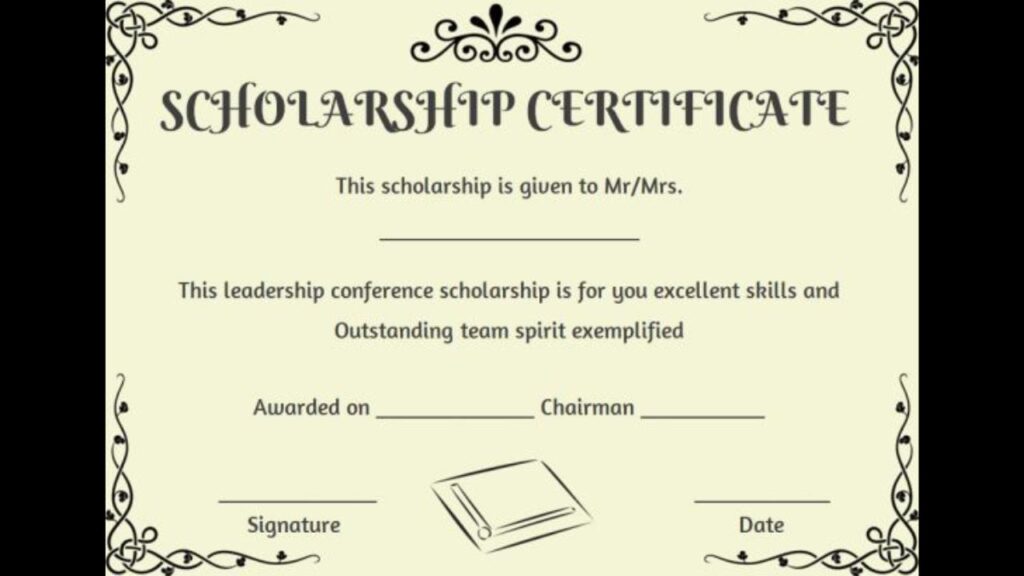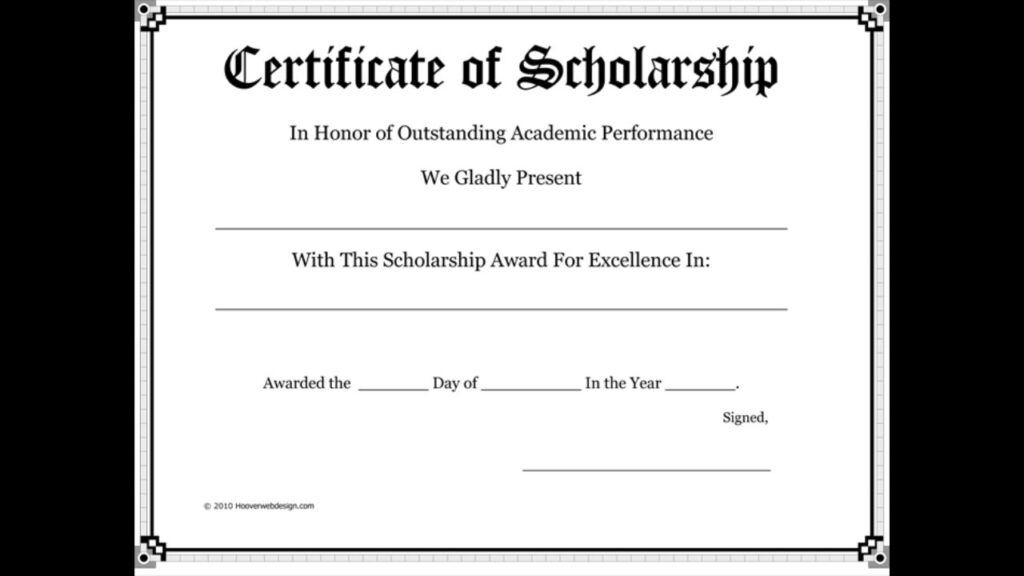Presenting a scholarship award is a significant and prestigious event. It symbolizes the recognition of talent, hard work, and future potential. Whether you are presenting on behalf of an institution, company, or individual, delivering the award effectively and meaningfully can leave a lasting impression. In this article, we’ll guide you through the essential steps and best practices for presenting a scholarship award in a formal and memorable way.
1. Understanding the Importance of the Scholarship Award
A scholarship award ceremony is more than just a simple handover of a certificate or monetary gift. It is a moment that recognizes academic, personal, or extracurricular excellence. This momentous occasion highlights the values of the awarding body, showcases its commitment to education and development, and provides motivation for other students. Properly planning and presenting the award emphasizes its importance and makes the recipient feel honored.

2. Preparing for the Scholarship Presentation Ceremony
Determine the Format of the Ceremony
Before the presentation, it’s crucial to determine the structure of the event. Will it be formal or informal? Will there be other award categories? Understanding the nature of the event helps in preparing the right speech and maintaining the ceremony’s tone. Ensure the setting matches the prestige of the award being presented.
Coordinate with the Event Organizers
If you are presenting the award at a larger event, coordination with the event organizers is essential. Understand the event’s flow, the timing of your speech, and other important logistics. You don’t want to be caught off-guard with unexpected last-minute changes.
Learn About the Scholarship Recipient
It’s important to gather detailed information about the scholarship recipient beforehand. Knowing their academic background, personal achievements, and any challenges they have overcome allows you to craft a personalized and sincere message. Make sure to mention these accomplishments during the presentation to connect with the recipient and audience.
3. Writing the Scholarship Presentation Speech
Crafting a Memorable Introduction
Start by addressing the audience with a formal introduction, setting the tone for the ceremony. Acknowledging the importance of the award and the hard work that went into selecting the recipient sets the stage for the presentation. Be clear about why this scholarship is important and what it represents to the community, institution, or organization offering it.
An example introduction might be:
“Good evening, everyone. It is both a privilege and an honor to stand before you today on behalf of [organization/institution]. The scholarship we are presenting this evening celebrates not only academic excellence but also the dedication, perseverance, and potential of young minds destined for greatness.”
Highlight the Purpose of the Scholarship
In this section of your speech, emphasize the values and purpose of the scholarship. Whether it focuses on academic merit, leadership qualities, or financial need, let the audience and recipient understand its significance.
For example:
“The [Scholarship Name] is designed to recognize outstanding leadership and community involvement. It represents our organization’s commitment to supporting the next generation of leaders who not only excel academically but also contribute meaningfully to society.”
Acknowledge the Scholarship Recipient’s Achievements
One of the most important parts of presenting a scholarship is personalizing the presentation to the recipient. Highlight their key achievements, be it their academic standing, leadership roles, community involvement, or perseverance in the face of adversity. Sharing a story or accomplishment that resonates with the audience will create an emotional connection.
An example might be:
“This year’s recipient, [Recipient’s Name], has shown incredible resilience, dedication, and passion for [academic subject or field]. Their [specific accomplishment], along with their commitment to [community service or other notable activities], truly makes them deserving of this award.”
Conclude with Inspirational Remarks
End your speech on a high note with an inspirational message that speaks to the recipient’s future potential and the broader importance of education or leadership. Encourage them to continue striving for excellence and using the scholarship as a stepping stone toward greater success.
For example:
“We are confident that [Recipient’s Name] will continue to excel and make meaningful contributions to their community and profession. We are proud to support your journey and look forward to witnessing the incredible impact you will have.”
4. Presenting the Award
Engaging Body Language
When presenting the award, your body language speaks volumes. Stand tall, maintain eye contact with the audience, and smile warmly. If possible, offer a handshake or a congratulatory gesture as you hand over the award.
Handing Over the Physical Award
The actual handover is a key moment. Make sure you are positioned correctly, and both the recipient and audience can clearly see the presentation. If the award comes with a certificate, plaque, or monetary check, hold it with both hands and hand it to the recipient with care and formality.
Allowing for a Photo Opportunity
After the handover, allow for a brief moment for photos. Ensure the recipient is holding the award prominently, and both you and the recipient are smiling at the camera. Photographs from these events are often shared publicly, so it’s important to capture the moment professionally.
5. Post-Presentation Engagement
Congratulating the Recipient
After the formal presentation, take a moment to congratulate the recipient personally. A one-on-one conversation, handshake, or even a few words of encouragement can go a long way in making the recipient feel valued and appreciated.
Encouraging Networking
If the event allows, encourage the recipient to connect with key figures at the event. Introduce them to other prominent guests or award committee members. This could help in broadening their network and potentially open doors for future opportunities.
Thanking the Audience and Organizers
Finally, do not forget to thank the audience and event organizers for their time and efforts in making the event a success. A simple, heartfelt acknowledgment can go a long way in strengthening relationships and encouraging future partnerships.
6. Conclusion
Presenting a scholarship award is a deeply rewarding experience that has a lasting impact on both the recipient and the awarding institution. It’s an opportunity to recognize excellence, inspire future success, and celebrate the values that education instills in society. With the right preparation, speech, and presentation, you can ensure that the event is memorable, meaningful, and professional.

